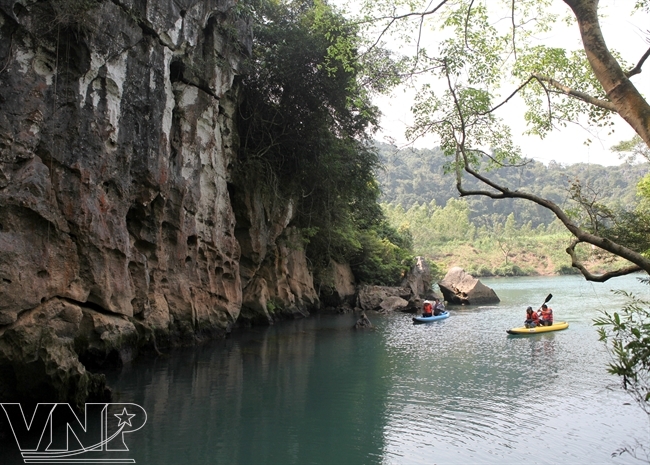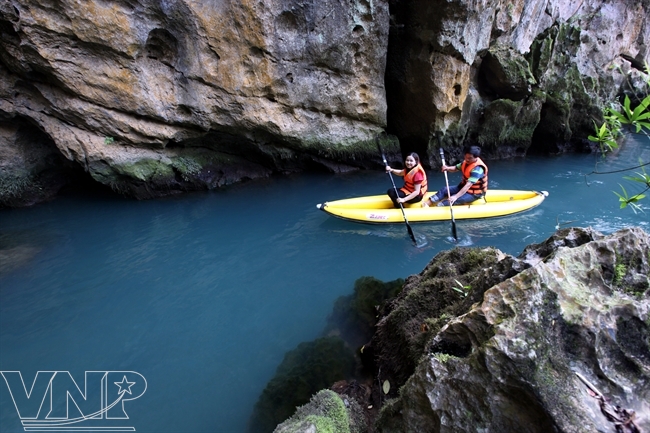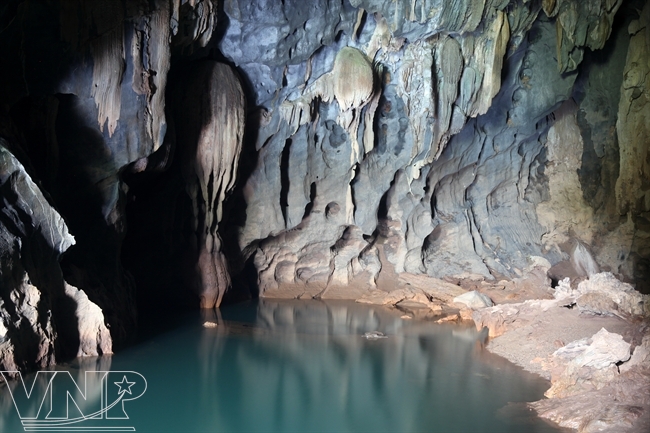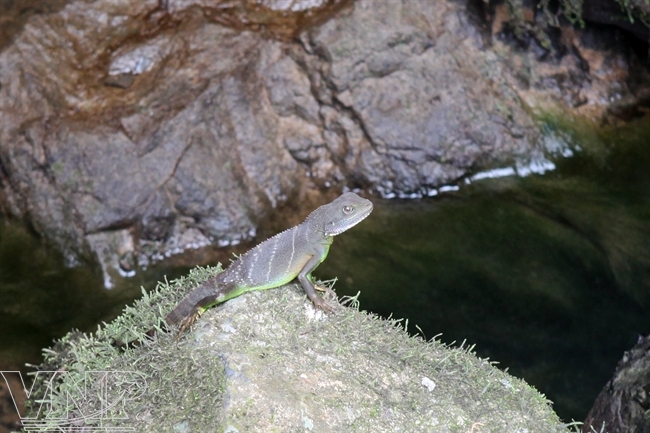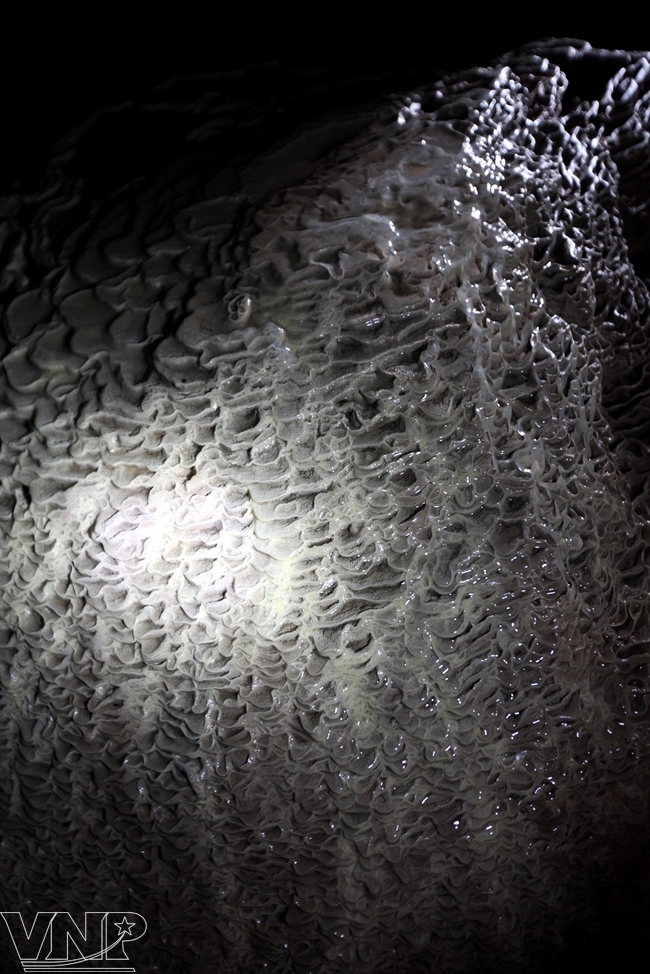During the trip, tourists sometimes see stones in different shapes in the clear and turquoise water of the river. The blue colour of the water in this river is rather strange and according to scientists’ explanation it is because of the erosion of the karst mountains and the natural phenomenon of calcium dissolving into water for millions of years.
|
|
Going deep inside the cave tourists will enjoy cool air and the magnificent beauty of the stalactites and stalagmites in different shapes on the ceiling and the floor that look like a golden stream. The stalactites in the cave are considered the standard sample of fossils that help scientists define the origination of the ancient karst mountains in Phong Nha-Ke Bang from the ancient ocean.
Because it is located near the river, the cave is rather humid, creating favourable conditions for the growth of fern plants. Therefore, tourists sometimes see small fern plants growing on stalactites and stalagmites that is a new and strange natural phenomenon in Toi Cave. The cave is also home to many animals like bats, swallows and Vooc (trachypithecus phayrei crepusculus). In 1995 Russian scientist L.Deharveng discovered a new species of crab and named it nemoron nomas. The sample of this species of crab is now preserved at the National University of Singapore’s Museum.
Taking in the four-hour tour, tourists not only had a chance to discover the beauty of nature, but also accumulate useful knowledge about typical karst geomorphologic characteristics of the ranges of mountains and diversified ecological system in Vietnam.

